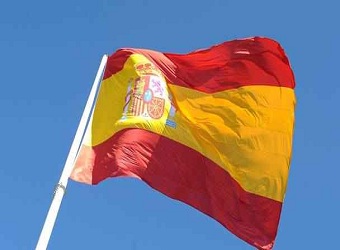Catalonia might be the separatist region making headlines at the moment but Europe has many other separatist movements that are closely watching developments in the northeastern Spain area.
Separatist movements in Europe can range from small townships to entire regions and the motivations for wanting to go it alone are equally as diverse encompassing linguistic and cultural differences as well as economic and historical justifications. While some separatist movements harbor dreams of gaining just a bit more autonomy from the national government, others like Catalonia are aimed at gaining full independence and nothing less.
Countries like Germany and Italy where states can have very distinct linguistic, cultural and historical differences tend to have numerous and significant separatist movements to contend with. Geographical characteristics can play a part too with islands — such as Sicily or the Faroe Islands (between Norway, Scotland and Iceland) — and peninsulas (such as Cornwall, in southwest England) often seeking more autonomy or independence, feeling “separated” and far from the centers of power.
Willem Buiter, chief economist at Citi, told CNBC on Wednesday that “the Europe of regions is making a comeback.”
“Too many countries in the European Union have secessionist problems, including the U.K., Belgium and Italy and this is not a unique problem,” he said.
Here. CNBC highlights some of the larger and long-standing separatist movements that are monitoring Catalonia’s referendum with interest.
Venice and Lombardy
Italy’s wealthy regions of Lombardy and Veneto are both eyeing referendums on October 22 aimed at gaining more autonomy.
Both regions have strong separatist movements, mainly driven by resentment at the perception that taxpayers’ money is spent in the poorer south of the country. As with Catalonia and Spain, Italy’s Constitutional Court has blocked the regions’ plans to hold a referendum on independence and so the citizens in each region will be asked if they want more autonomy (and more money) from the national government.
“Too many countries in the European Union have secessionist problems” -Willem Buiter, Chief economist at Citi
Known for being the city of romance rather than rampant nationalism, it’s worth remembering that Venice only became a part of Italy in 1866. In 2014, Venice had its own non-binding referendum on independence in which 2.1 million citizens (89 percent of the vote) voted for independence. Many voters feel that their taxes go to the poorer south rather than contributing to investment in the region.
Flanders and Wallonia
Belgium is a country split between three communities, languages and regions. Flanders and the Flemish community is in the north of the country (where Dutch or Belgian Dutch – also known as Flemish) is spoken. Then there is the mainly French-speaking south, known as Wallonia and just to complicate matters further, there is a German-speaking region in the far east of the country. There are also considerable movements within each of these regions striving for independence.
Political groups such as the New Flemish Alliance, a nationalist, conservative group which is dominant in the Belgian parliament, advocate a gradual secession of Flanders from Belgium. Euronews reported that the party even hung a Catalan flag outside its headquarters recently in support of the Spanish separatist region. With elections in 2019, the issue of Flemish independence is not likely to disappear soon.
The Basque Country
One region of Spain that is certainly watching events in Catalonia with interest is the Basque Country, an “autonomous community” situated on the north coast of Spain.
Like Catalonia, the Basque Country has its own language and distinct culture. Unlike Catalonia, it also has a history of some violent separatism with various terrorist attacks carried out by the nationalist and separatist group Eta. The armed movement for independence called a ceasefire in 2010 which was made permanent in 2011, however.
Separatist movements remain a force to be reckoned with in the region, with a spokesman for the region’s largest separatist party – the Basque Nationalist Party – saying recently that he hopes the region could have its own vote on independence just like Catalonia.
South Tyrol
The South Tyrol region is found in the northern-most part of Italy and is also known as the Alto Adige, but is distinctly un-Italian with German being the predominant language with only around a quarter of the region’s 510,000 inhabitants speaking Italian.
Despite being an autonomous province since 1972, giving it a greater level of self-determination – the region has a secessionist movement that would like to secede from Italy and reunify with Austria. The region was a part of the Austro-Hungarian Empire but was annexed to Italy following the World War I.
Scotland
One country looking at the Catalan referendum with interest is Scotland. Despite holding its own legal and U.K.-government approved referendum on independence back in 2014, which separatists lost with 55 percent of voters choosing to stay a part of the U.K., the pro-independence Scottish National Party (SNP) has not given up hope that another vote could be held sooner rather than later.
Following the vote in Catalonia last Sunday, the leader of the SNP, Nicola Sturgeon, said that the “strength of feeling” in Catalonia “cannot be ignored” but she added that talks needed to be held by both sides.
Sturgeon was close to calling a second referendum on independence in Scotland recently but the party lost a number seats during the 2017 general election this year. Political analysts saw these losses as signifying that Scottish voters have little appetite for another vote on the matter, especially so close to the last one in 2014.
Source: CNBC


